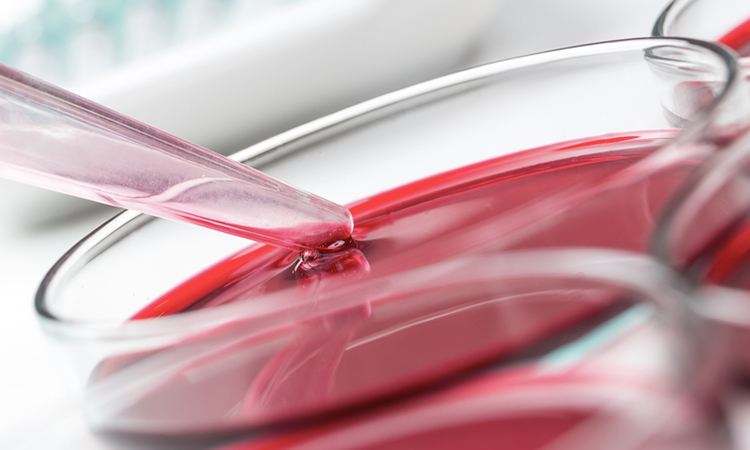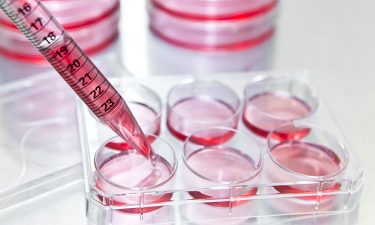Why there is a blockage in the biosample system
Posted: 24 September 2021 | Dr Robert Hewitt (Biosample Hub) | No comments yet
Dr Robert Hewitt explores why a shift is required in the way that biosamples are sourced by the drug discovery industry, including smaller biotech companies.


Biotechnology companies everywhere in the world can have great difficulty accessing high quality patient samples to support their research and development. At the root of the problem is the fact that biosamples most often originate in a healthcare setting within the public sector; however, as biotech companies are in the private sector, they therefore have reduced access.
About hospital biobanks
Publicly funded hospital biobanks generally exist in teaching hospitals and academic centres, established for the purpose of supporting research in associated universities and institutes. They require dedicated staff and expensive equipment – such as liquid nitrogen freezers – making the start-up and maintenance costs considerable. While the start-up phase may be funded by research grants, it is harder to obtain funding for the ongoing maintenance costs of these unglamourous, yet essential, core facilities. So, many biobanks survive on funding provided by their own institution. A typical hospital biobank may have two to three staff working extremely hard within a very tight budget to provide professionally curated clinical samples for in-house researchers.
One way in which biobanks can develop an independent income stream is to charge a fee for the provision of patient samples. However, this must be approached with caution as it is illegal to make a profit from the sale of human tissue in many countries. As such, biobanks are allowed to charge a carefully calculated cost-recovery fee.
Why small biotechs and big pharma are very different
Sample access problems are more substantial for smaller, younger biotech companies than for established pharmaceutical companies. Most pharma companies have had many years to develop networks of hospitals that can supply them with samples. Additionally, the fact that pharma companies conduct clinical trials gives them access to hospitals, doctors and patients. Therefore, many large pharma companies have teams of dedicated clinical sample procurement staff and their own in-house biobanks, which often dwarf those found in typical hospital biobanks.
In contrast, a small biotech company, particularly a start-up, has none of these advantages and often cannot afford to have staff dedicated to sample procurement.
Obtaining samples ‘from abroad’


Scientifically speaking, the main disadvantage of using a broker is that sample provenance may be lacking (brokers tend not to reveal their sources for business reasons) and along with this there may be uncertainty about the quality of the samples and hence the reliability of resulting research.
Encouraging best practice
So, what can be done to provide industry and particularly small biotech companies, with the high-quality, reliable samples they need? The answer is that some practices need to be encouraged, while others need to be discouraged.
It must surely be best practice for any researcher to obtain biosamples directly from the source – that is, directly from the hospital biobank that collected the sample from the patient. In this way, they can have confidence that samples and data have been collected professionally. To encourage this, we need to make it easier for biotechs and hospital biobanks to find each other. Biotechs can search a number of biobank directories to find suitable partners, but this is often a difficult approach. Many biobanks listed may not be open to working with industry or may give companies a low priority. The use of biobank directories often results in disappointing and false leads.
One initiative that offers a solution is the not-for-profit organisation, Biosample Hub. This platform is dedicated to bringing biotechs and academic/hospital biobanks together and its use is restricted to these two groups. The only reason for biobanks to be on the platform is to supply industry, so the problem of false leads is minimised.
Another way to encourage this is to make it more attractive for hospital biobanks to work with industry. In other words, there need to be more enticing incentives. The problem is that for many hospital biobanks, local academic researchers get top priority while other academic researchers get second priority, leaving industry at the end of the queue. This is natural, because these biobanks are established as institutional initiatives, with the purpose of serving their own institutions. The focus of academic biobanks is very much on research productivity as measured by publication impact and unfortunately, industry, due to intellectual property, faces restrictions about how much work it can publish and when.
The time seems ripe for a major change in the way clinical samples are sourced”
The incentive of funding is certainly the most viable option for getting hospital biobanks to work with industry. Much has been written on the subject of biobank sustainability, especially financial sustainability. One approach is for biobanks to charge industry a cost-recovery fee for its samples and to charge a fee from additional sample processing services, such as cutting sections and extracting DNA. This approach seems to be especially well understood by French biobanks, who use the term valorisation for the process of adding and yielding value from their samples. All French hospital biobanks are certified according to the French norm NF S96-900 which must also make them more attractive to industry.
Another approach is to make external grant funding of biobanks conditional on service to industry. This could be aided by making it mandatory for funded biobanks to make their sample access policies public, by requiring annual reports on sample distribution and perhaps even having industry representatives on sample access committees. Patient representatives are well accepted, so why not industry representatives?
Discouraging the use of samples that lack provenance
New regulations are likely to have a major impact on how biotech companies source their clinical samples. An example is provided by the new European regulation governing the manufacture of in vitro diagnostic (IVD) devices, which comes into force on the 26 May 2022. To demonstrate conformity, makers of IVDs must show that the biospecimens used to validate their devices have undergone acceptable pre-analytic processing. This will require the sourcing of samples from biobanks that are certified to meet specific quality management standards. As a result, diagnostics companies will need to obtain samples from known sources that provide full provenance information.
This need for provenance information will put pressure on commercial brokers to change their business practices and reveal the source of their samples. One way in which brokers may mitigate this is by using binding contracts with both the provider and the requestor of samples, to prevent them from interacting independently of the broker. Of course, not all companies or biobanks will be comfortable with such restrictions.
There are technological solutions that can be used to ensure the reliability of provenance information of samples and use of these will be beneficial. The use of blockchain is one example. This digital technology allows tracking of the transfer of biospecimens from the patient donor to the researcher in a secure, transparent and ethical manner, with all transactions documented in an incorruptible shared digital ledger.
What do patients want?
The time seems ripe for a major change in the way clinical samples are sourced by industry and by smaller biotech companies in particular. Now more than ever, as a result of the pandemic, the general public understands the importance of biotech and pharma companies.
So, the question is, to speed up the development of new therapies, diagnostics and vaccines, do we want to allow biotech companies to have access to the best quality patient samples? As patients (past, present and future), we need to encourage patient advocacy organisations to act on our behalf.
About the author
Dr Robert Hewitt is the founder of Biosample Hub, a platform that connects biotech companies looking for samples with biobanks that have ethically sourced samples available.
Related topics
Analysis, Cell Cultures, Drug Development, In Vitro, Legal & Compliance








